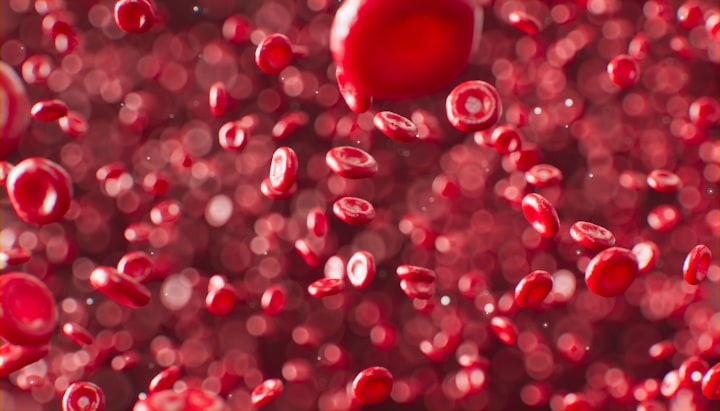Blood: Definition, components and function:
Definition:
Blood is one of the transport systems that transport essential nutrients and oxygen to various organs and eliminate carbon dioxide from the body. Blood is composed of platelets, plasma, Red Blood Cells (RBC), and White Blood Cells (WBC). Blood is pumped by the heart through the blood vessels. Blood is used to maintain homeostasis.
Components of blood:
Blood has formed by the following components,
Plasma,
Red Blood Cells (RBC),
White Blood Cells (WBC),
Platelets.
Plasma:
Plasma is the largest component in blood. It makes up about 55% of the overall content. This is mainly water with a wide range of substances dissolved or suspended in it.
Functions of plasma:
Its main function is to transport essential nutrients, oxygen, hormones, and electrolytes to the various tissues and organs,
And also redistributing the water to the body requirements,
Maintain blood pressure and blood circulation.
Red Blood Cells (RBC):
It is otherwise called erythrocytes. The name erythrocyte is derived from the Greek word erythros means ‘red’ and kytos means ‘hollow vessel'. RBC is the biconcave in shape. It is red due to the presence of hemoglobin. Hemoglobin is a protein used to carry oxygen and other nutrients. Hemoglobin levels vary from person to person. Men have higher levels of hemoglobin compared to women. Normal range of RBC for adults, the usual range is generally 4.35 to 5.65 million red blood cells per microliter (mcL) of blood for men and 3.92 to 5.13 million red blood cells per microliter (mcL) of blood for women.
Functions:
Carry oxygen from lungs and deliver to all the tissues present in body. Oxygen (O2) get binds with Red Blood Cells due the presence of hemoglobin.
It also carries carbon dioxide (CO2) from various tissues and excretes via the lungs through the exhale process.
White Blood Cells (WBC):
White Blood Cells are also called leukocytes. The name leukocyte is derived from the Greek word leuk means ‘white’, and cyte means ‘cell’. WBC's main role is to protect the body against microbes. WBC surrounds microbes and engulfs and destroys the foreign particles by phagocytosis mechanism. The normal range of WBC count for adults is about 4,500 to 11,000 WBC per microliter of blood.
Functions:
They are kill the bacteria and microbes by phagocytic mechanism, because they are phagocytic in nature.
Protect the body against allergic conditions and also kill the parasites that enter the body.
WBC secrete and transport the serotonin, heparin and histamine.
Platelets:
Platelets are also called ‘thrombocytes’. The word thrombocytes is derived from the Greek word thrombos means ‘thick drop or clot’, and cyte means 'cell'. Platelets form small fragments in the area of ruptured blood vessels. The normal range of platelets present in the blood is about 150,000 to 450,000 platelets per microliter of blood. Having more than 450,000 platelets is a condition called thrombocytosis. Having less than 150,000 platelets is a condition called thrombocytopenia.
Functions:
Its main function is to prevent blood loss from ruptured blood vessels by clot formation.
Disease-associated with blood:
Iron deficiency:
Sickliness is a condition described by a diminished number of red platelets or a lessening in how much hemoglobin in the blood. This can bring about exhaustion, shortcoming, and different side effects.
Hemophilia:
Hemophilia is a hereditary problem that impedes the body's capacity to control blood thickening, prompting delayed draining episodes.
Leukemia:
Leukemia is a kind of disease that influences the blood and bone marrow, causing a strange creation of white platelets.
Thrombocytopenia:
This is a condition portrayed by a low platelet count, which can prompt expanded draining and swelling.
Sickle Cell Iron deficiency:
Sickle cell sickliness is a hereditary problem that influences hemoglobin, making red platelets become inflexible and expect a sickle shape. This can prompt different inconveniences, including agony and organ harm.
Hemochromatosis:
Hemochromatosis is a condition where the body retains and stores an excess of iron, prompting iron over-burden in the blood and organs.
Profound Vein Apoplexy (DVT) and Pneumonic Embolism (PE): These circumstances include the development of blood clusters in the veins (DVT) that might possibly loosen up and go to the lungs, causing a blockage (PE).
Hemoglobinopathies:
These are hereditary problems that influence the construction or creation of hemoglobin, like sickle cell illness and thalassemia.
HIV:
The human immunodeficiency infection (HIV) goes after the insusceptible framework, including specific platelets, prompting AIDS (Helps).
Intestinal sickness:
Jungle fever is a parasitic disease that can influence the blood, causing side effects like fever, chills, and paleness.
For more articles follow Pharmacyinfos.com






Comments
There are no comments for this story
Be the first to respond and start the conversation.